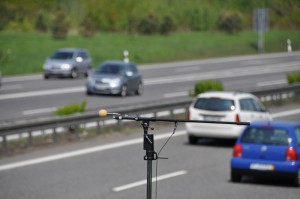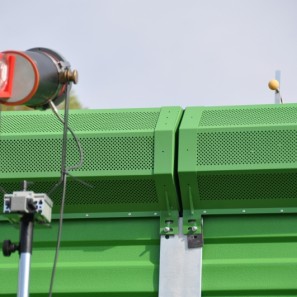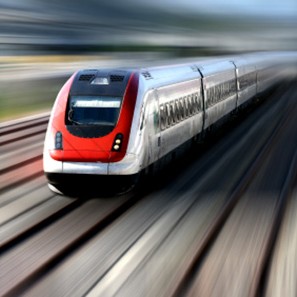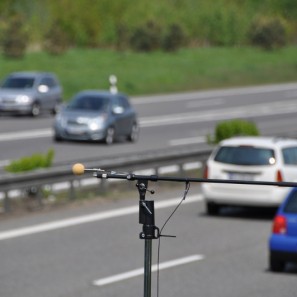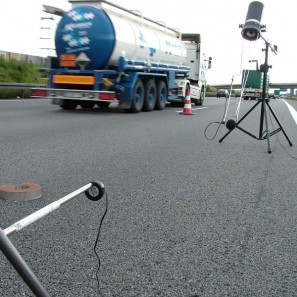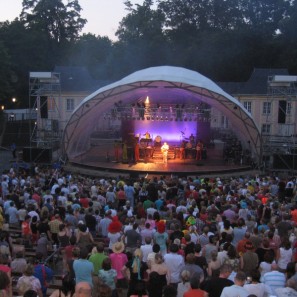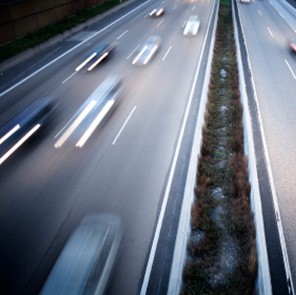Principle of SPB method
In both cases, the measuring quantity to be evaluated is the time history of the A-weighted sound pressure level (SPL) occuring during pass-by of a vehicle of constant speed at a horizontal distance of 7,5 m to the center of the road lane.
The time history of the SPL during pass-by of a statistically significant total number of vehicles of various categories:
- cars
- two-axial truck
- multi-axial truck
is evaluated with respect to the maximum SPL level. The latter one is plotted against the vehicle speed. Subsequently, the vehicle noise level for a defined reference speed of the various categories is determined by linear regression.
To evaluate the road surfaces with respect to noise emission, the various vehicle noise levels are weighted and summed up energetically. The resulting single value is the so called SPB index.
The lower the SPB index is, the lower the noise generation of the road surface is. Alternatively, the DStrO value (correction term for different road surfaces) according to the „Guidelines for noise protection at roads“ (RLS-90) can be specified from the vehicle noise level of cars.
Requirements for SPB measurement
The determination of the vehicle noise level only allows the evaluation of valid vehicle pass-by. A valid vehicle pass-by requires a technically faultless vehicle. Furthermore, the time history of the SPL during pass-by of the vehicle to be investigated has to decline about more than 6 dB to both sides of the maximum SPL. Therefore, within the considered time interval no other vehicle is allowed to enter the road segment to be investigated.
Modified SPB-method – Average level method
Caused by the continuously increasing volume of traffic, on highways in many cases the required total number of valid vehicle pass-by cannot be achieved. Therefore, aim of a project on behalf of the Federal Highway Research Institute – Bundesanstalt für Straßenwesen (BASt) was the development of a novel average level method to investigate the influence of road surfaces on traffic noise, even in the case of high volume of traffic.
The novel method is based on the simulation of the SPL time history of the single vehicles passing the receiver by applying a suitable sound propagation model. This requires especially the knowledge of the specific traffic flow. By comparing the synthesized simulated SPL time history of the whole traffic flow with the measured one, the vehicle noise level (or the DStrO-value respectively) can be determined representing the influence of the road surface on traffic noise.
The testing of the new average level method showed that the deviation of the vehicle noise level for cars is much less than the measurement tolerance of the present statistical pass-by method.
